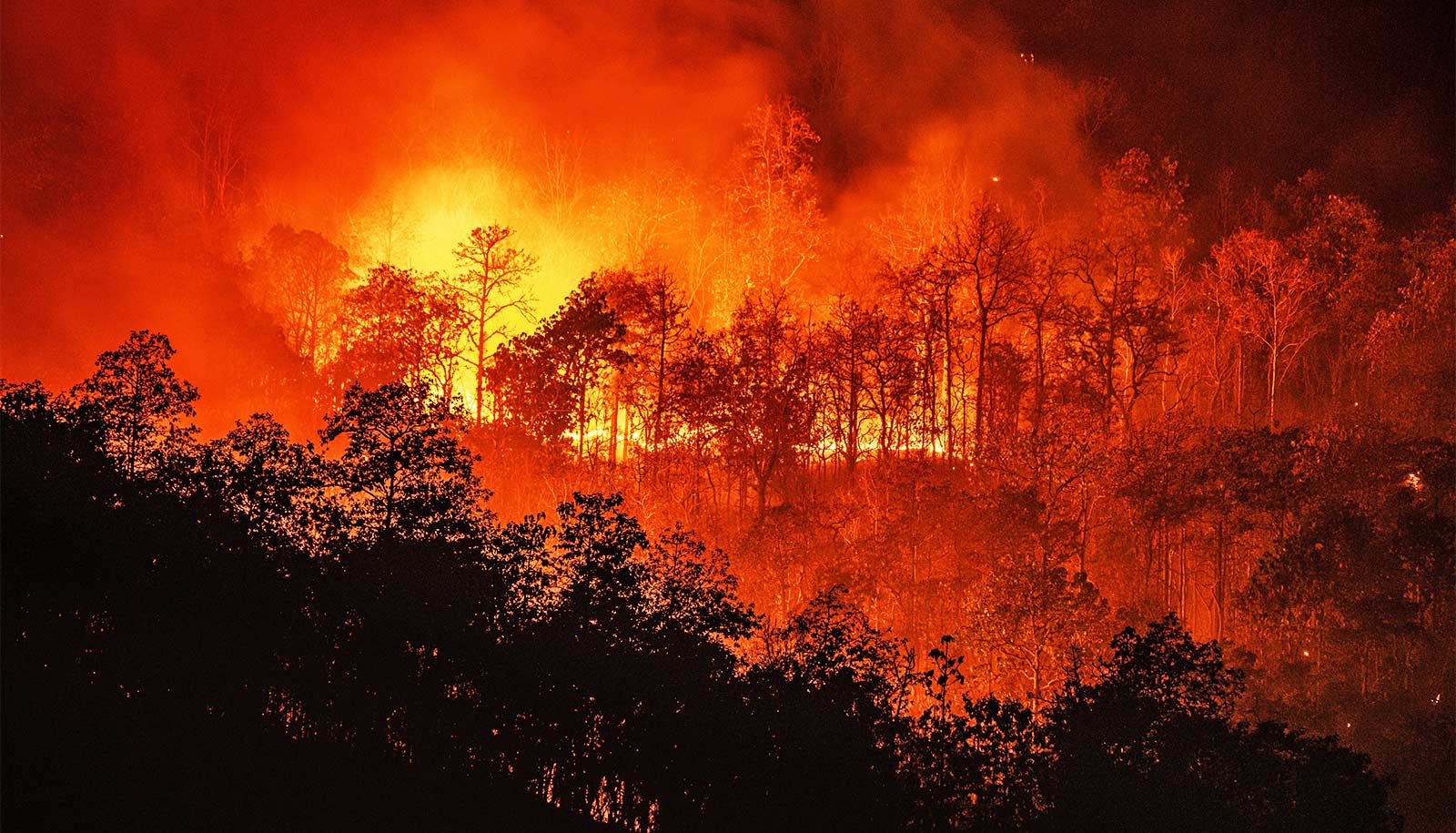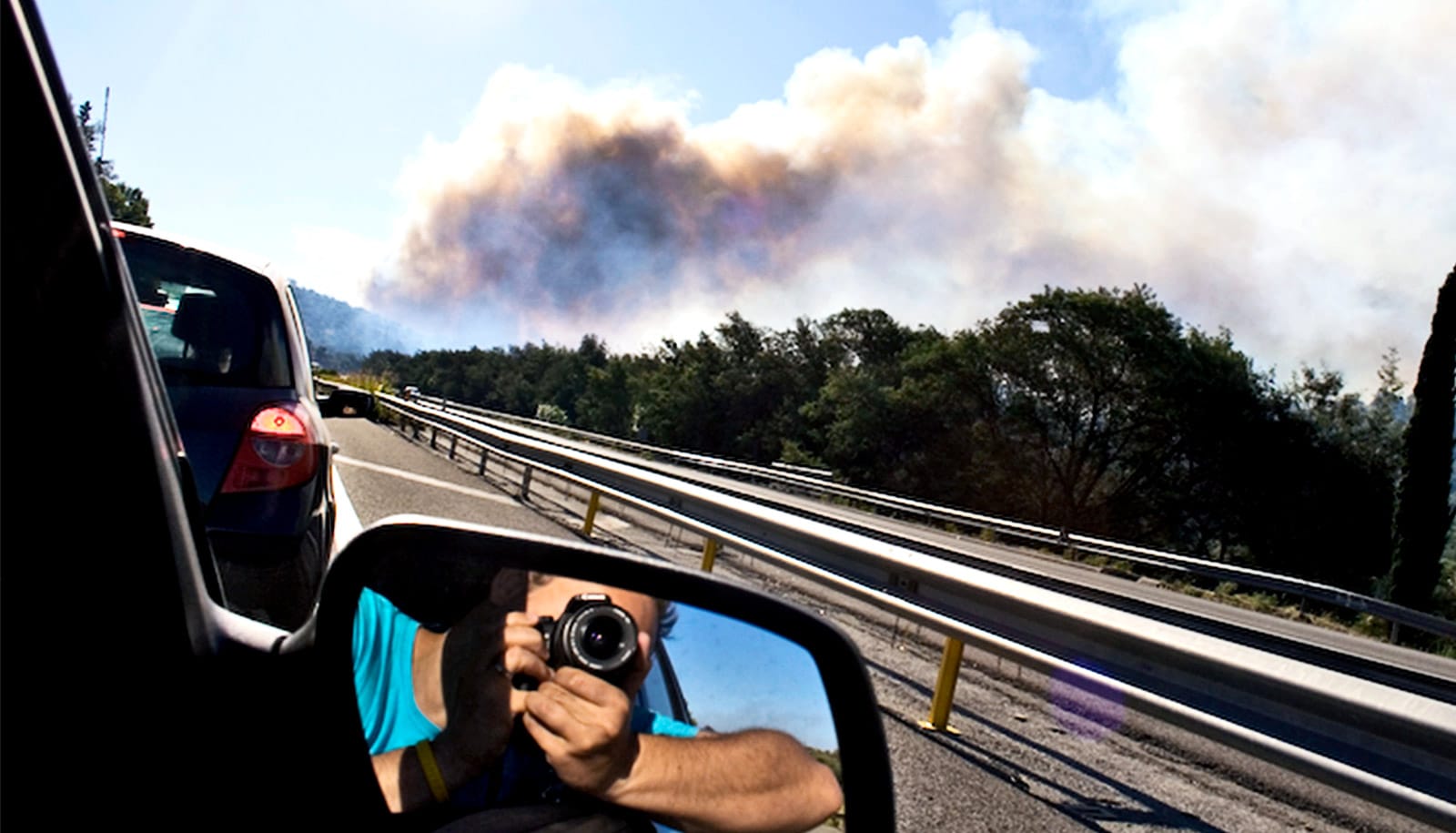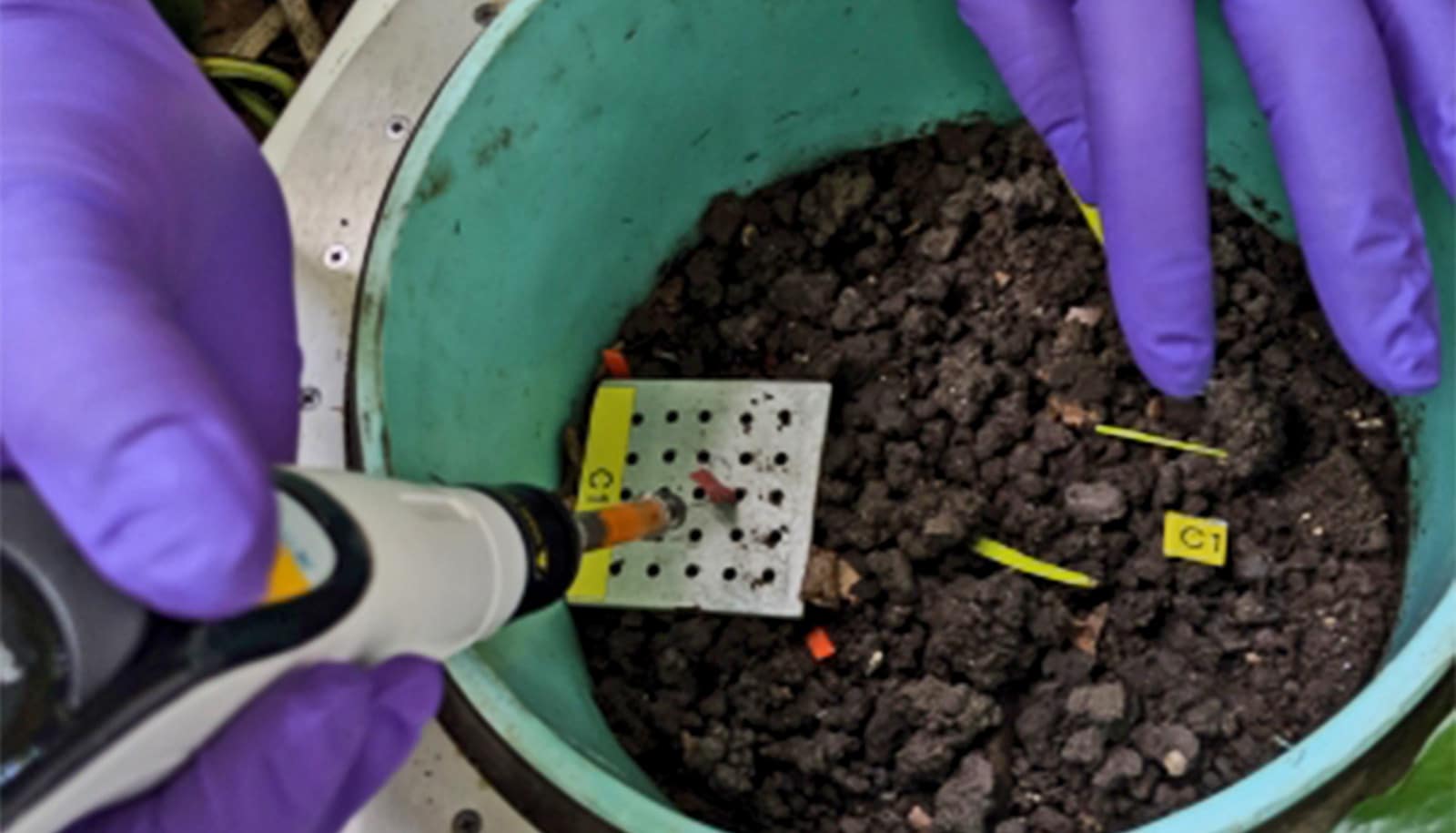Satellite data from across California’s landscapes reveal an increase in nitrogen dioxide levels in remote forest areas, and wildfire and soil emissions are likely the reasons why, according to a new study shows.
Nitrogen dioxide is short-lived in the atmosphere but plays a central role in the formation of the pollutants ozone and particulate matter, which can lead to respiratory issues and asthma in humans, as well as harm plants and crop yields.
For the study, published in Environmental Research Letters, the researchers looked at summertime surface and satellite concentrations of nitrogen dioxide between 2009 and 2020 and found that levels decreased by 2-4.5% per year in urban areas across California, rural concentrations remained relatively constant, and remote forests experienced an increase of roughly 4.2% per year.
“Forested areas show a steady, rapid rate of increase in summer,” says senior author Ian Faloona, a professor in the land, air, and water resources department at the University of California, Davis. “The trend is alarming.”
To do the research, the scientists examined surface nitrogen dioxide levels collected by the state and NASA’s Aura satellite. They sorted areas of nitrogen dioxide in the atmosphere by surface temperature and soil moisture levels. They also consulted a California database of fire incidents to help place lands into one of five categories: urban, forests, croplands, scrublands, and barren (little vegetation).
Controls on internal combustion engines and other fossil fuel emitters have reduced levels of nitrogen dioxide in urban areas, where most air pollution monitors are placed.
Continuous satellite data helped fill in the picture in less monitored regions and found that effect is not mirrored in rural areas and remote forests. There, wildfires and emissions from soils, particularly agricultural soils with fertilizer use, correlate to an increase of nitrogen dioxide levels, Faloona says.
The findings could help inform future policy decisions as regulators seek additional decreases of the pollutant. As current emission management actions continue to reduce fossil fuel emissions, regulators will need to address other sources that have historically been overshadowed by traditional internal combustion sources. Those will play an increasingly important role in future air quality policy.
“Soils, and wildfires in particular, are really going to become steerers of the ship of our air pollution,” Faloona says. “We have to put a lot of effort into curtailing the effects of wildfires and understanding better our emissions from agricultural soils.”
Areas of high fertilizer use can be a source of nitrogen dioxide emissions because microbes compete with crops for nitrogen, generating gaseous nitrogen compounds. But additional research will be necessary to further clarify the exact role wildfire and soil may play in the increase of ambient nitrogen dioxide.
“Our results point to opportunities for different sets of policies and technologies to assist in reducing nitrogen dioxide concentrations in rural and economically disadvantaged areas of California, but will require a concerted effort to better understand the exact environmental dependence of soil and wildfire emissions,” the authors write.
Additional coauthors are from Hong Kong Polytechnic University and Cornell University.
The US Department of Agriculture’s National Institute of Food and Agriculture funded the research.
Source: Emily C. Dooley for UC Davis



